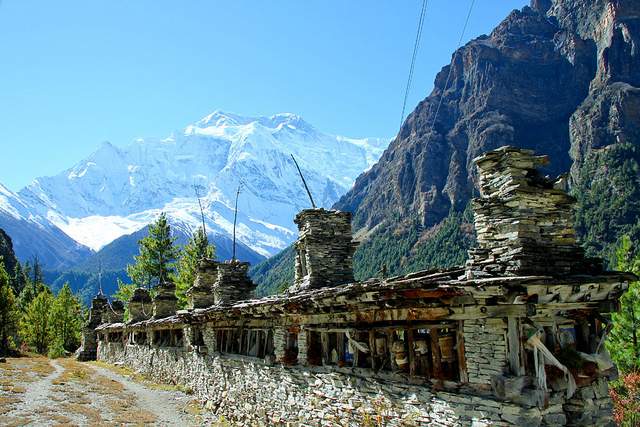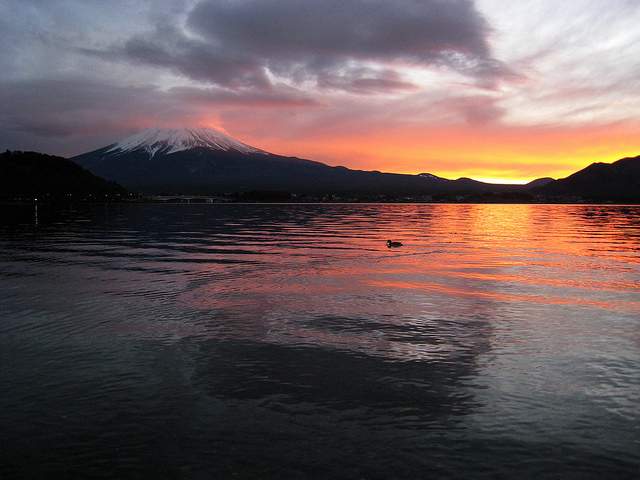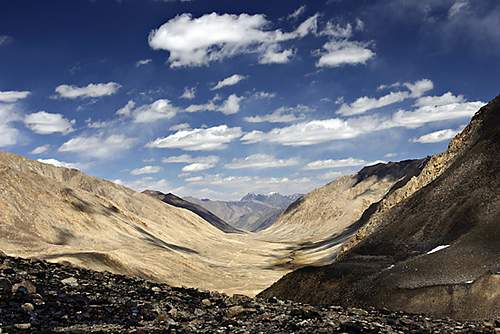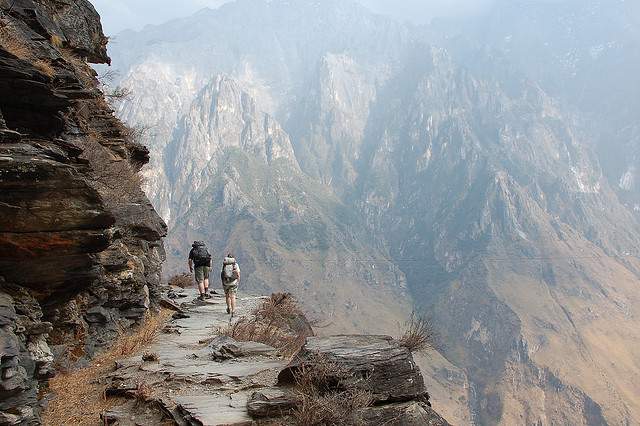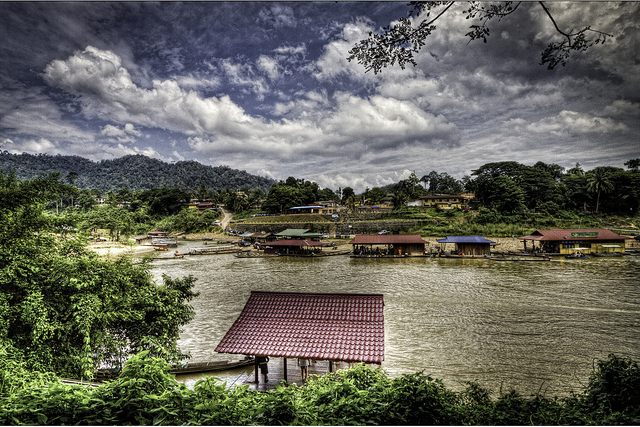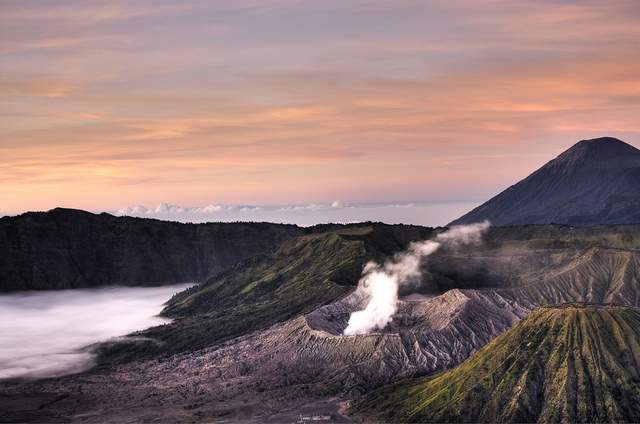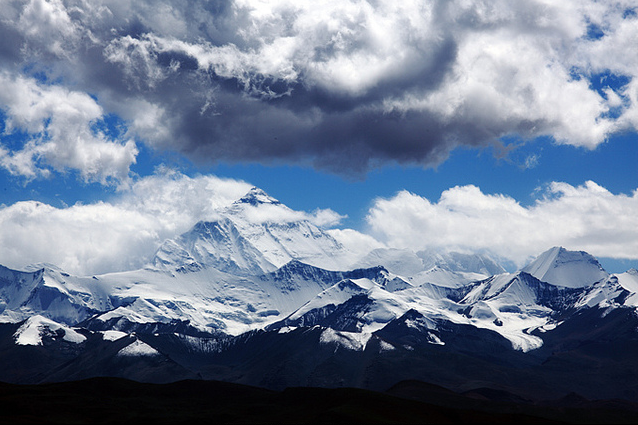Our “Sustainable Travel” series is sponsored by Global Basecamps. Global Basecamps is specialty travel company that helps independent travelers research and book locally owned boutique hotels, off-the-beaten path lodges and multi-day excursions all over the world. Whether hiking the Inca Trail, experiencing a traditional Japanese Ryokan, or relaxing on the beaches of Thailand, Global Basecamps specializes in designing completely customized itineraries to meet each travelers specific priorities and match their travel style.
From mosquito-ridden rainforest safaris to sprawling mountain ranges and sandy beaches chock-full of cocktail-sipping tourists, Asia is doubtless a continent that offers every extreme. Lovers of the great outdoors will find endless ways to get their adrenaline fix, not least attempting some of the world’s greatest hiking trails.
Whether watching the sunrise from the peak of a holy mountain, summiting a sulphur-belching active volcano or scouring the jungle for traces of the endangered Black Panther, these seven treks are amongst Asia’s most spectacular.
[social]
One for the bucket list: Annapurna circuit, Nepal
A firm favorite on Top Ten lists, the Annapurna Circuit is widely renowned as one of the world’s greatest treks. Weaving through mountainous peaks and valleys; tramping alongside terraced farmlands and winding rivers, and bedding down in local villages are all part of the parcel for those undertaking the 300km trek. The epic trail runs around the Annapurna mountain ranges in the Himalayas, reaches a peak of 5416m and takes an average of between 17 to 21 days to complete. It’s not only the scenery that draws in explorers though; the route traverses holy sites of Hindu tribes and Tibetan Buddhists and offers a glimpse into the inspiringly simple lifestyles of the mountain tribes, as well as taking in part of The Great Himalaya Trail, another one of Nepal’s popular trekking routes.
>> Book an Annapurna trek
One for a challenge: Mount Fuji, Japan
As ubiquitous to Japanese tourism as the sumo wrestler or sushi restaurant, the snowcapped peak of Mount Fuji, with its almost symmetrical cone, has become an iconic image of the nation. The ‘holy mountain’ is viewed as sacred to many Japanese, but remains an exceptionally popular climb amongst both locals and foreigners – not least because of its legendary sunrise, supposedly one of the world’s most impressive. Climbing the path to the summit at 3,776m takes one or two days and is best undertaken in the summer months when the weather is most favorable. Prepare for an arduous and exhausting trek, though – as the infamous saying goes “if you never climb Mount Fuji once you are a fool, if you climb it more than once you are twice the fool.” Indeed, many climbers fail to reach the summit, stopping instead at one of the 10 stations positioned on route.
>> Book an adventure tour of Japan
One for getting off the beaten track: Pamir mountains, Tajikistan
Tajikistan may not be a destination topping most backpacker’s itineraries, but for those hunting out a trekking expedition that ventures into largely undiscovered territories, Asia offers few more exhilarating options. The Pamir mountains (or the “Roof of the World” as is the translation from Persian) are some of the world’s highest and form a sprawling range spread along the borders of Tajikistan, Kyrgyzstan, Afghanistan and Pakistan. Untamed wilderness, stark landscapes and breath-sucking altitudes provide ample opportunities for the adventurous and those lucky enough to stumble upon remote mountain settlements may be treated to the renowned hospitality of the Pamir people.
There are numerous little-known hiking routes to choose from, including a rumored 50 mountains still unclimbed (best attempted by the experienced only) but this is unforgiving and largely inaccessible territory, so booking a tour or hiring a reputable local guide is highly recommended. The less courageous can opt for a road trip along the winding Pamir Highway instead – one of the world’s highest international highways.
One for the snap happy: Tiger Leaping Gorge, China
A list of Asia’s treks wouldn’t be complete without mentioning one of China’s most famous (and photogenic) hiking trails. The 16km long gorge, so called after a legendary tiger leapt across the gorge under pursuit of a hunter (pretty impressive considering the gorge is still 25m wide at its narrowest point), is one of the world’s deepest river canyons and offers two main walkways – down in the valley or high above – traversing a varying terrain of dirt tracks, snaking creeks and mountain pathways. Located close to Lijiang in Southwestern China, the gorge is also host to China’s longest river, the frothing Yangzi River, which makes for a great view from the surrounding peaks.
The high road is arguably the most trekked option (and certainly the safer of the two, as its counterpart is often submerged by the river or blocked by rockslides) and totals around 22km, with mountain huts positioned along route for those preferring to break up the journey.
One for nature lovers: Gunung Tahan, Malaysia
With some of the most pristine, untouched rainforest in the world, Malaysia’s unique eco-systems make a veritable playground for nature enthusiasts. Ranking amongst the top of the forest trails are those traversing Gunung Tahan (Mount Tahan), Peninsular Malaysia’s highest peak at 2,187m. Located in the famed Taman Negara national park in West Malaysia, the mountain climb is notoriously hard going, navigating steep ridges and racking up some 18 river crossings before reaching the final ascent. Aching limbs and blistering toes will soon be forgotten though, as the trail offers a backdrop of lush vegetation, untouched jungle and wonders including the world’s largest orchid, some of the world’s tallest trees and an abundance of wild beasts from endangered black panthers to Sumatran rhinoceros. The mountain offers a choice of three routes, taking anywhere from 3-7 days and is best attempted with the aid of a local guide.
One for the adventurous: Mount Bromo, Indonesia
Scrambling the craggy mounds of an active volcano, engulfed in steaming sulphur clouds and gurgling craters may be a task better suited to the thrill-seeker, but that doesn’t stop crowds of tourists descending on Indonesia’s famed peak each year. Mount Bromo or Gunung Bromo as its known to the locals, sits at 2,329m and despite being just one of 129 volcanoes in Indonesia, remains the best known thanks to its picture-perfect cone and accessibility.
Set in the Bromo Tengger Semeru National Park in East Java, Bromo is most commonly accessed from the nearby mountain village of Cemoro Lawang and dozens of tour guides offer their services to wannabe climbers. Summit in time for sunrise for the best views, but be careful to check for trekking restrictions – sections are often closed down due to safety concerns and with the last eruption in 2011 you could get a little more than you bargained for.
One for serious climbers: Mount Everest, Nepal
The mother of all mountains reaches a lofty 8,848m, making it the world’s highest peak and consequently the ultimate ascent for ardent mountaineers. If the pre-climb training, acclimatizing and sheer scale of the summit climb (not to mention the 200 odd death count of attempters) is enough to put you off, opt instead for a trek to Everest base camp, an epic 2-3 week journey of sweeping Himalayan vistas and stopovers in remote Sherpa villages decorated with flapping colored prayer flags. Summiting the nearby peak of Kala Patar offers great views of Everest with considerably less toil.
>> Book an Everest trek
Read more about eco-friendly travel:
- 9 Destinations to Go Green
- How to Travel Responsibly on a Budget
- 5 Ways to Experience Sustainable Travel
Global Basecamps offers sustainable trekking options around the world, from the Inca Trail Trek to custom Nepal treks and much more. As a member of the International Mountain Explorers Connection (IMEC), Global Basecamps works to ensure that all staff on trekking expeditions worldwide are treated fairly and given benefits that assist mountains communities through a variety of ecotourism initiatives. Global Basecamps Nepal treks, for example, are led by local Sherpa guides and cooks that are well paid, highly experienced, and receive a wide range of benefits. Global Basecamps also support IMEC’s Porter’s Assistance Program, which focuses on improving the working conditions for porters on Kilimanjaro and in Nepal.
Photos by: elrentaplats, midorisyu, dwrawlinson, Ian Carvell, Bas Lammers, Zac Turner, 長亭

